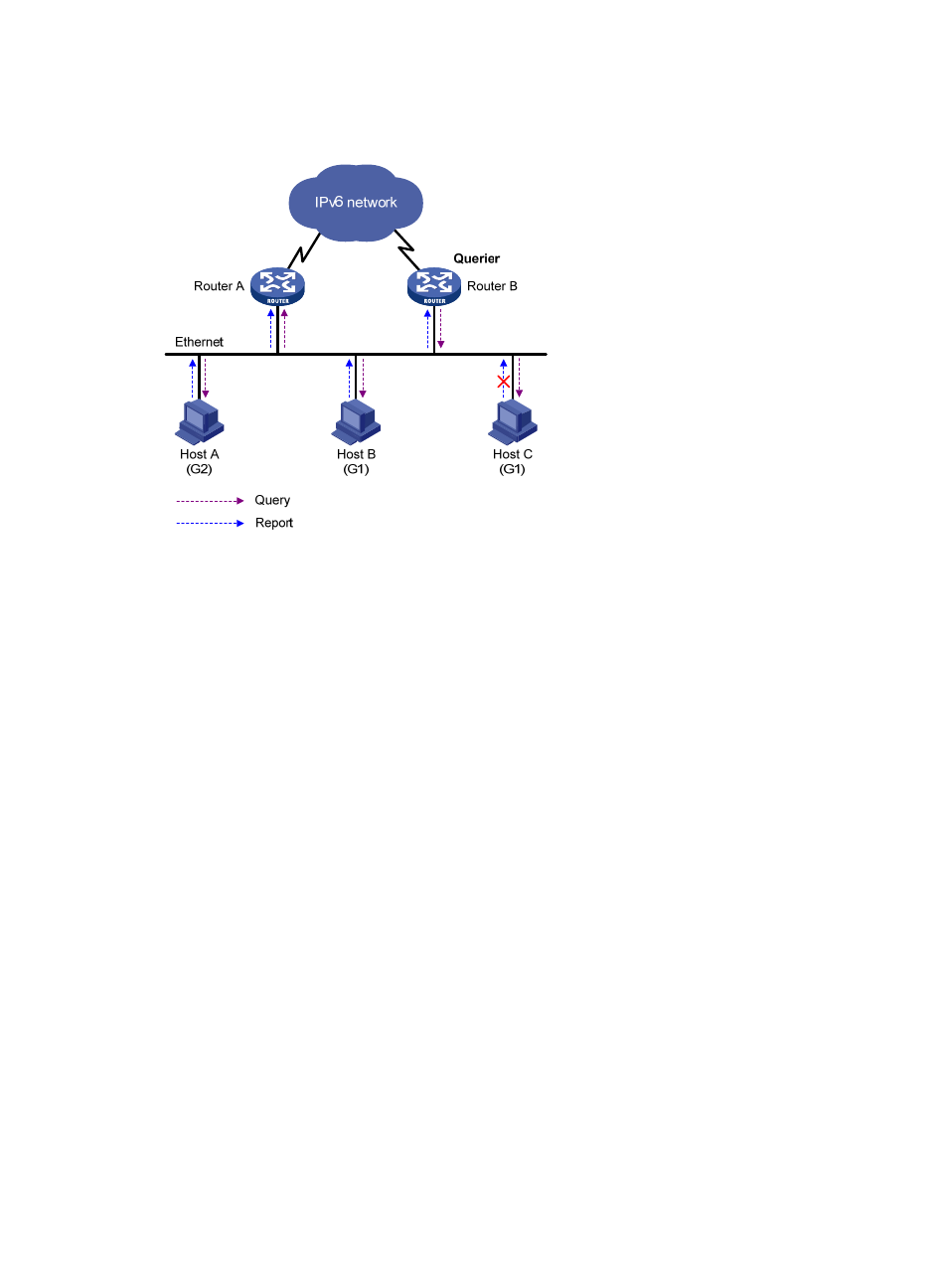Joining an ipv6 multicast group, Leaving an ipv6 multicast group – H3C Technologies H3C S12500-X Series Switches User Manual
Page 145

135
Joining an IPv6 multicast group
Figure 41 MLD queries and reports
As shown in
, assume that Host B and Host C want to receive the IPv6 multicast data addressed
to IPv6 multicast group G1, and Host A wants to receive the IPv6 multicast data addressed to G2. The
following process describes how the hosts join the IPv6 multicast groups and how the MLD querier (Router
B in
) maintains the IPv6 multicast group memberships:
1.
The hosts send unsolicited MLD reports to the IPv6 multicast groups they want to join without having
to wait for the MLD queries from the MLD querier.
2.
The MLD querier periodically multicasts MLD queries (with the destination address FF02::1) to all
hosts and routers on the local subnet.
3.
After receiving a query, Host B or Host C (the delay timer of whichever expires first) sends an MLD
report to the IPv6 multicast group G1 to announce its membership for G1. Assume that Host B
sends the report. After hearing the report from Host B, Host C, which is on the same subnet as Host
B, suppresses its own report for G1 because the MLD routers (Router A and Router B) already know
that at least one host on the local subnet is interested in G1. This mechanism, known as the "MLD
report suppression," helps reduce traffic on the local subnet.
4.
At the same time, because Host A is interested in G2, it sends a report to the IPv6 multicast group
G2.
5.
Through the query/report process, the MLD routers learn that G1 and G2 have members on the
local subnet, and the IPv6 multicast routing protocol (for example, IPv6 PIM) that is running on the
routers generates (*, G1) and (*, G2) multicast forwarding entries. These entries are the basis for
subsequent IPv6 multicast forwarding. The asterisk (*) represents any IPv6 multicast source.
6.
When the IPv6 multicast data addressed to G1 or G2 reaches an MLD router, the router forwards
the IPv6 multicast data to the local subnet according to the (*, G1) and (*, G2) multicast
forwarding entries, and then the receivers on the subnet receive the data.
Leaving an IPv6 multicast group
When a host leaves a multicast group, the following process occurs:
- H3C S9800 Series Switches H3C S5560 Series Switches H3C S5130 Series Switches H3C S5120 Series Switches H3C S12500 Series Switches H3C SR8800 H3C SR6600-X H3C SR6600 H3C WX6000 Series Access Controllers H3C WX5000 Series Access Controllers H3C WX3000 Series Unified Switches H3C LSWM1WCM10 Access Controller Module H3C LSWM1WCM20 Access Controller Module H3C LSQM1WCMB0 Access Controller Module H3C LSRM1WCM2A1 Access Controller Module H3C LSBM1WCM2A0 Access Controller Module
